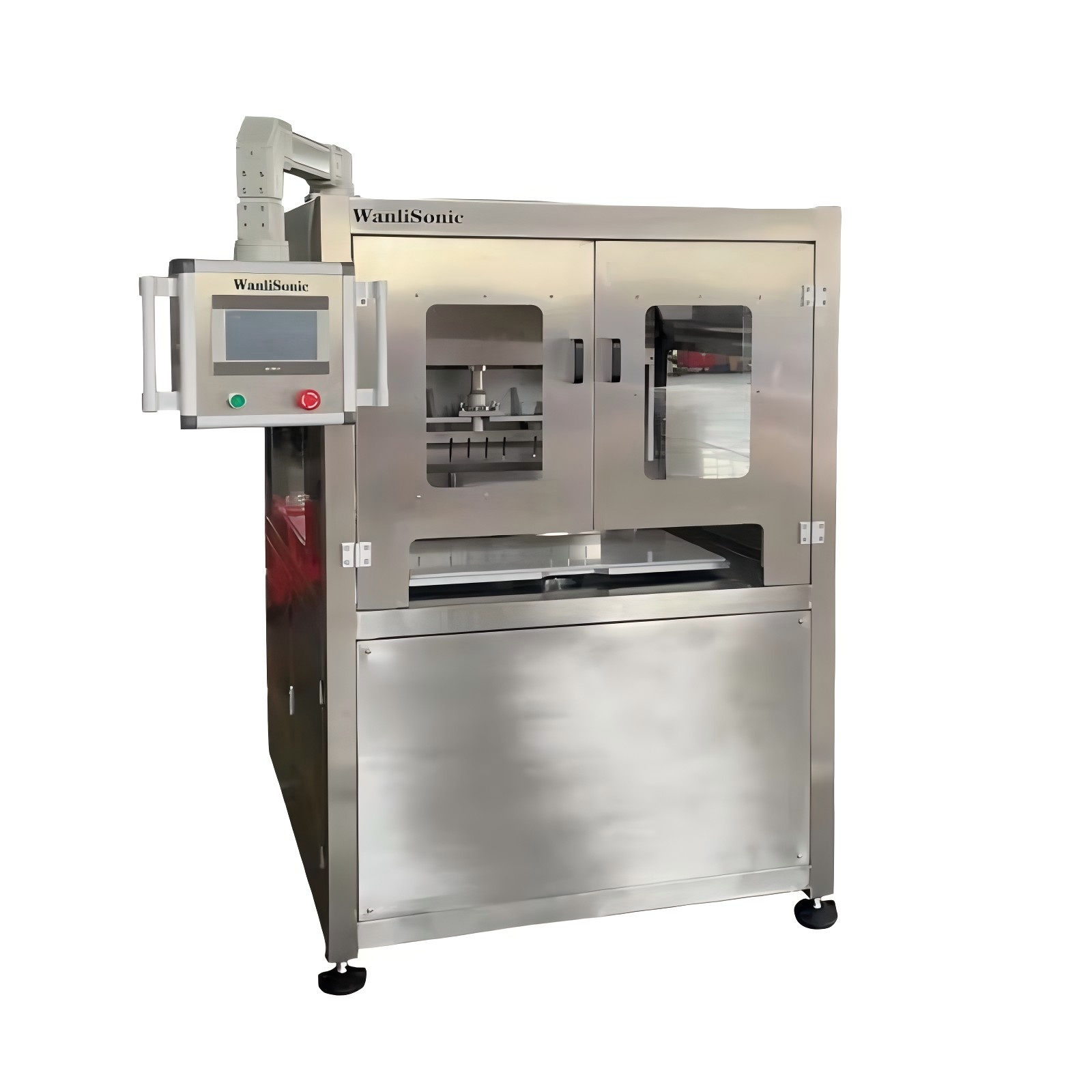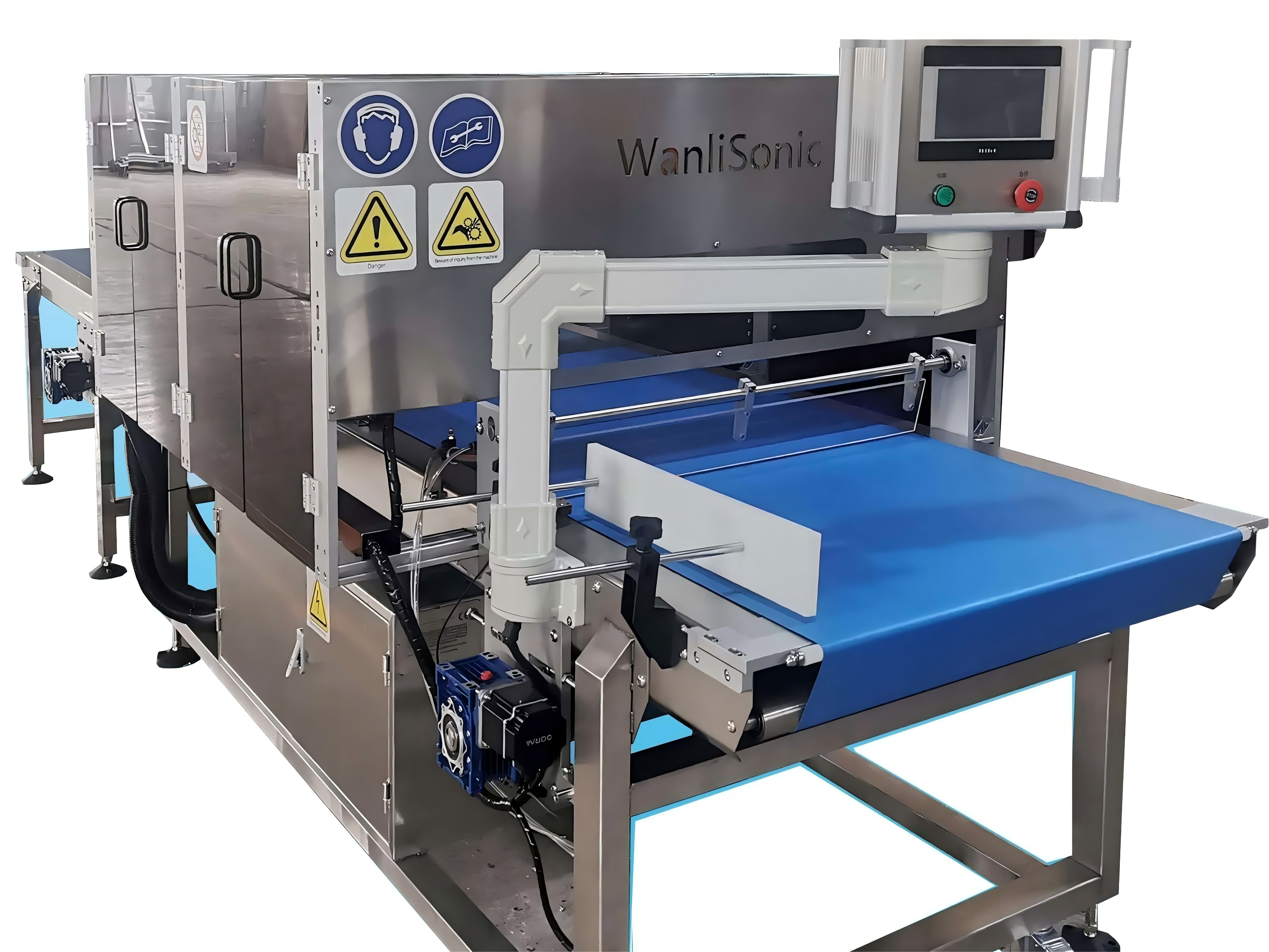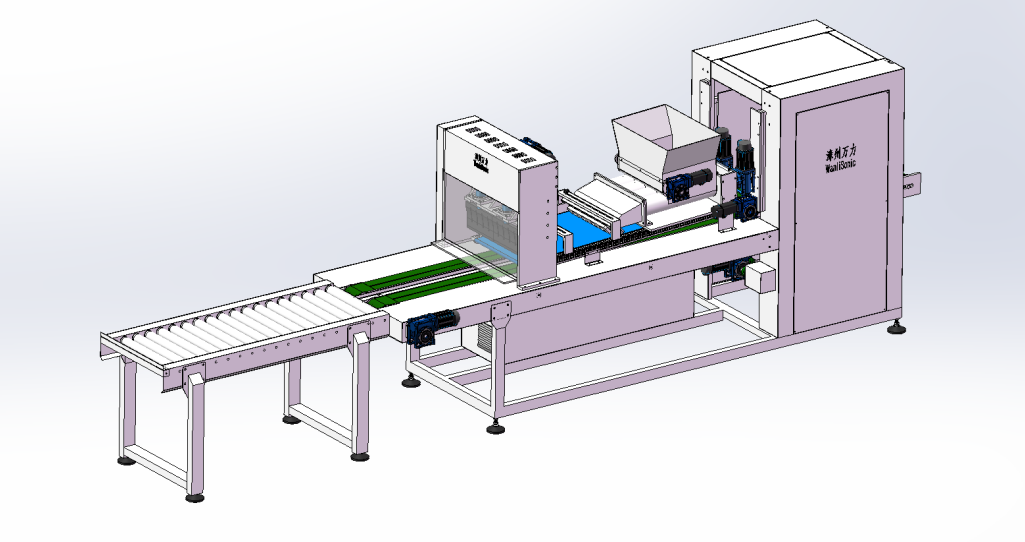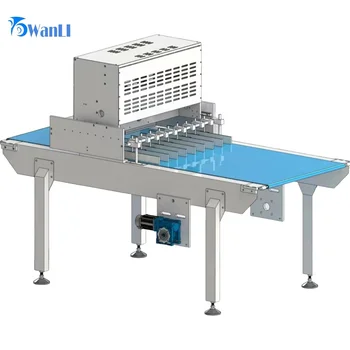Ultrasonic Cookie Cutting Machine
In the ever-evolving world of culinary technology, the introduction of the ultrasonic cookie cutting machine stands as a testament to innovation and efficiency. This groundbreaking tool not only elevates the art of baking but also redefines the standards of precision and speed in cookie production. Today, let’s dive into the intricacies of this remarkable machine, exploring its myriad benefits, and contrasting it with traditional cutting methods. We’ll also delve into the core components of its ultrasonic unit—the blade, transducer, and generator—to understand how they collectively contribute to its unparalleled performance.
Introduction: The Dawn of a New Era in Baking
Baking has always been a blend of artistry and science, requiring meticulous attention to detail and a keen sense of creativity. From home bakers to professional pastry chefs, the process of cutting cookies has traditionally been a manual task, relying heavily on knives, rolling pins, and cookie cutters. While these methods have their charm and can produce beautiful results, they often come with limitations in terms of speed, consistency, and the ability to handle diverse dough consistencies.

The ultrasonic cookie cutting machine emerges as a game-changer, leveraging advanced ultrasonic technology to automate and refine the cookie-cutting process. This technology harnesses high-frequency vibrations to slice through dough with unparalleled precision and efficiency, transforming the way we approach cookie production.
The Benefits of Ultrasonic Cookie Cutting Machines
Precision and Consistency:
The ultrasonic blade vibrates at incredibly high speeds, ensuring that each cookie is cut with meticulous precision. This results in uniformly shaped cookies, which is crucial for aesthetic appeal and ensuring even baking. Traditional methods, while capable of producing good results, can suffer from inconsistencies due to human error or variations in dough consistency.
Speed and Efficiency:
The rapid vibrations of the ultrasonic blade allow for significantly faster cutting times compared to manual methods. This is particularly beneficial for commercial bakeries that need to produce large quantities of cookies quickly. The machine can operate continuously without fatigue, maintaining a consistent output rate throughout extended periods.
Versatility with Dough Types:
Ultrasonic cutting excels in handling a wide range of dough consistencies, from soft and sticky to firm and crumbly. Traditional cutters can struggle with sticky doughs, often leading to distorted shapes or stuck dough on the cutter. The ultrasonic blade’s non-stick properties and precise control make it ideal for all types of dough.
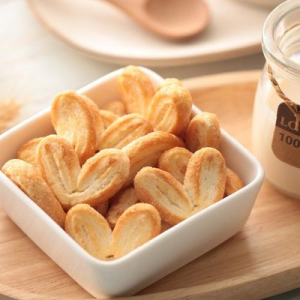
Hygiene and Cleanliness:
The ultrasonic machine minimizes direct dough handling, reducing the risk of contamination and making the cleaning process simpler and more effective. Blades can be easily removed and sanitized, ensuring compliance with food safety standards.
Cost-Effectiveness:
While the initial investment in an ultrasonic cookie cutting machine may be higher, its long-term benefits in terms of reduced waste, increased productivity, and lower labor costs make it a cost-effective solution for both small-scale and industrial bakeries.
Comparison with Traditional Cutting Methods
Traditional cookie cutting methods, such as using rolling pins and cookie cutters, have been the staple of baking for centuries. They offer a tactile, hands-on approach that many bakers cherish for its creative freedom and personal touch. However, these methods fall short when compared to the ultrasonic machine in several key areas:
Precision and Uniformity: Manual cutting can lead to variations in size and shape, especially when dealing with large batches. Ultrasonic cutting ensures perfect uniformity, enhancing the visual appeal and baking consistency of each cookie.
Speed and Efficiency: Manual methods are inherently slower, limiting production capacity. Ultrasonic machines can significantly increase throughput, making them ideal for high-volume baking operations.
Material Handling: Traditional cutters may struggle with sticky or tough doughs, leading to wasted material and increased labor. Ultrasonic blades glide through dough effortlessly, minimizing waste and maximizing yield.
Hygiene: Direct dough handling increases the risk of contamination. Ultrasonic machines minimize this risk through reduced human interaction and easy-to-clean components.
The Heart of the Machine: The Ultrasonic Unit
The ultrasonic cookie cutting machine’s effectiveness stems from its sophisticated ultrasonic unit, comprising three critical components: the blade, transducer, and generator.
The Blade:
The ultrasonic blade is the tool that makes direct contact with the dough. It is designed to vibrate at ultrasonic frequencies, typically between 20-40 kHz, creating a rapid cutting action that slices through dough with minimal resistance. The blade’s material is chosen for its durability, hardness, and resistance to wear, ensuring long-lasting performance.
The Transducer:
The transducer is the component that converts electrical energy into mechanical vibrations. It sits between the blade and the generator, amplifying the electrical signals received from the generator and converting them into the high-frequency vibrations that drive the blade. The transducer’s efficiency directly impacts the cutting performance, with advanced designs offering higher vibration amplitudes and better energy transfer.
The Generator:
The generator is the powerhouse of the ultrasonic unit. It supplies the electrical energy required to operate the transducer and blade. Modern generators are designed to be highly efficient and reliable, providing a stable and consistent power supply that ensures smooth and continuous operation of the ultrasonic blade.
Together, these components form a cohesive system that delivers unparalleled cutting performance. The generator provides the power, the transducer converts it into mechanical vibrations, and the blade harnesses these vibrations to slice through dough with remarkable precision and speed.
Conclusion: Embracing the Future of Baking
The ultrasonic cookie cutting machine represents a significant leap forward in baking technology, offering a blend of precision, efficiency, and versatility that traditional methods cannot match. Its sophisticated ultrasonic unit, with its meticulously engineered blade, transducer, and generator, ensures that each cookie is cut to perfection, enhancing both the aesthetic and functional qualities of the final product.
As the culinary world continues to evolve, the adoption of such innovative technologies will be crucial for bakers seeking to stay competitive and meet the growing demands of consumers. The ultrasonic cookie cutting machine is not just a tool; it’s a catalyst for innovation, driving the baking industry towards new heights of efficiency and creativity.
In summary, the ultrasonic cookie cutting machine is a must-have for any baker serious about elevating their craft. Its ability to combine precision, speed, and adaptability makes it a game-changer, setting a new standard in cookie production. Embrace this technological marvel and watch your baking endeavors reach new levels of excellence.

